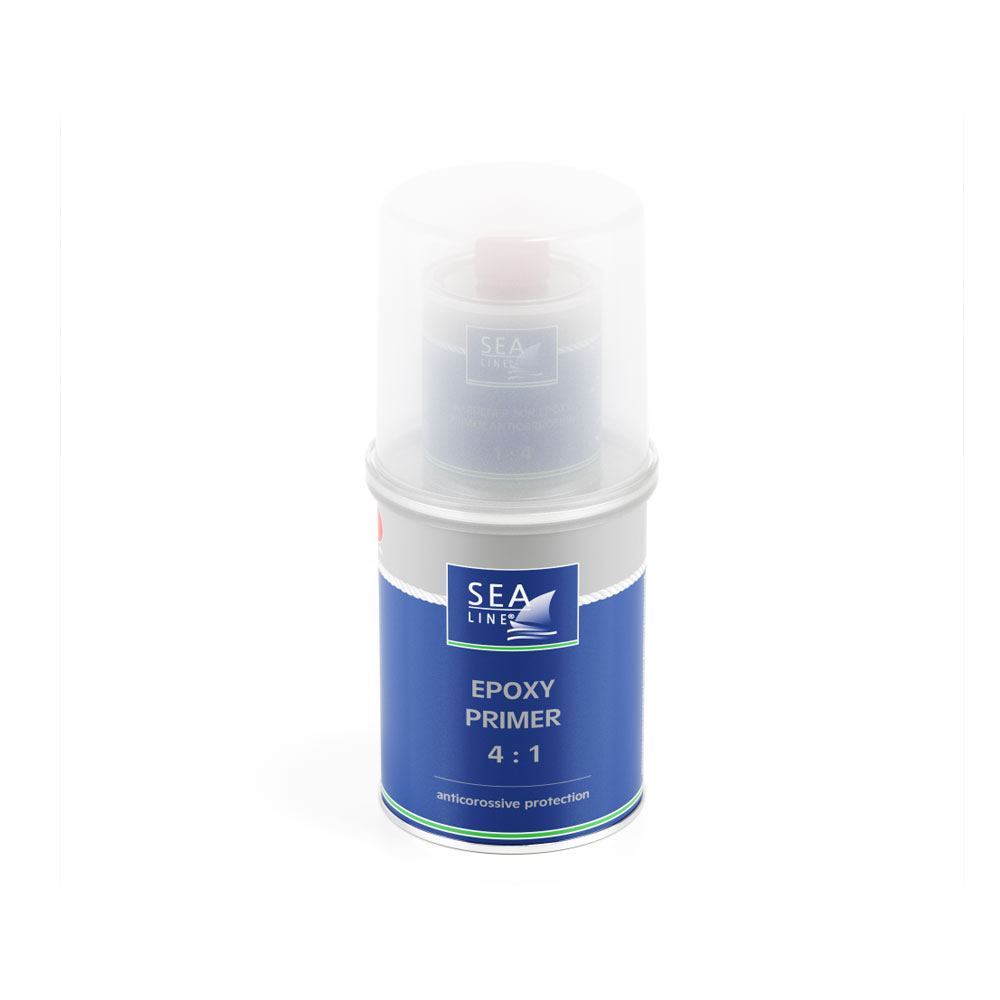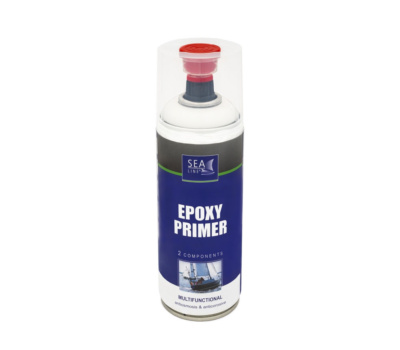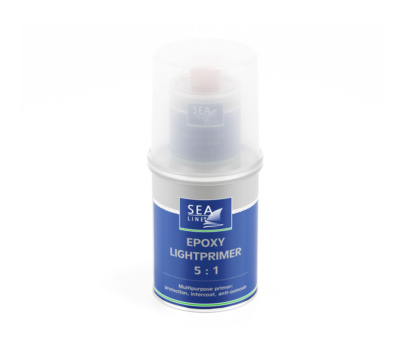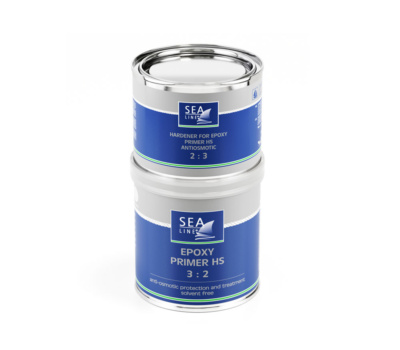We primarily recommend it for surface corrosion protection.
The 4:1 epoxy anti-corrosion primer can be used on all parts of yachts and boats made of steel, both above and below the waterline.
| Capacity | Code | |
|---|---|---|
| set (primer + hardener) | 750 ml | 5076 |
| primer | 6 l | 5145 |
| hardener | 1,5 l | 5147 |

| Type | Steel, aluminium |
| Place | Above and below waterline |
| Function | Grounding Intercoating Filling coat Anticorrosive |
| Application | brush, roll, spray gun |
| Thinning | Yes – thinner for epoxy system |
| Theoretical coverage For 1l | 11-12 m2 for 85 μm WFT/ 60 μm DFT |
| Number of coats | 2 – 3 |
| Pot life -20°C | 2 h |
| Time between layers without sanding | 4 h – 5 days |

The offered EPOXY PRIMER SPRAY 2K is a 2-component epoxy primer with multifunctional applications. This

This is a multifunctional paint that protects, enhances adhesion, and also protects against osmosis. Lightprimer

This particular product is recommended for protecting the laminate below the waterline, especially for repairing
There is a possibility of thinning antifouling, but we do not recommend this procedure due to the risk of reducing the effectiveness of the paint. If it is necessary to thin the antifouling paint, it is recommended to dilute it to a maximum of 0-5% (by volume).
Sea-Line yacht paints are designed for painting the surface of boats and yachts made of various materials, e.g. laminate, wood or steel. We do not have a certificate of the National Institute of Hygiene, which would allow the use of yacht paint to paint the tank with drinking water.